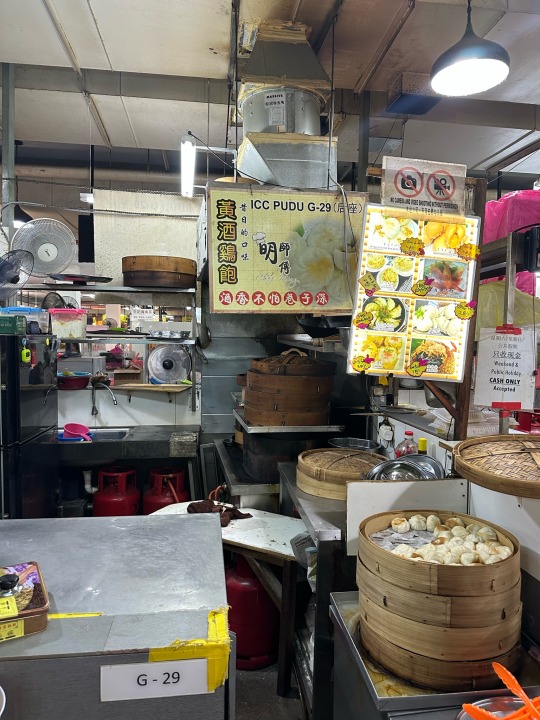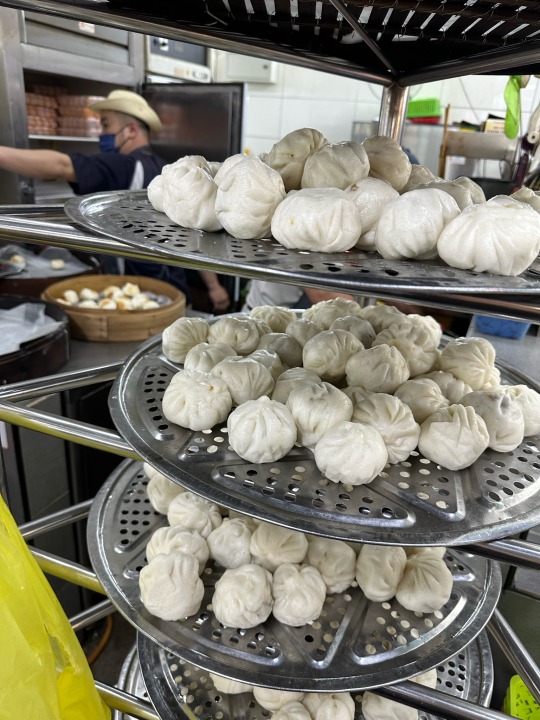#rice wine
Text

Niu Rou Mian (Beef Noodle Soup)
3-4 lbs beef shanks (Preferably with the bone and marrow still attached to make for a richer stock, or separated by tendons. If it is separated by tendons, the meat will have to be sliced before serving)
1 can chicken broth
1 yellow onion
1 tomato
soy sauce
shaoxing wine (rice cooking wine)
rock sugar (the best is the "red" kind from Taiwan)
spices (I use a special packet of spices I bring back from Taiwan, but star anise would work fine)
dou ban jian (hot chili bean paste)
noodles (I actually use a dry flour kind from Nijiya Market)
scallions
cilantro
Place the beef shanks in a pot of water and bring to a boil. This prevents the impurities in the beef from getting into your stock later. Remove the beef shanks and place in a clean pot.
Add one can of chicken broth (family secret!) and add enough additional water to cover the beef.
Cut both the tomato and onion in half before adding to the pot.
Add soy sauce, shaoxing wine, rock sugar, and spices in ratios that work for you. The best way to do this is to taste test. To get more flavor into the meat, don't be afraid to add a good amount of soy sauce. I like to thin this braising liquid with more chicken broth or water at the end to make the stock. If you want some spiciness in your stock, add some dou ban jian to taste. I grew up without it, but I think it adds a flavor that many associate with niu rou mian.
Bring to a boil and let simmer for at least 2 hour, or until tender. The meat will harden when cooled, so keep that in mind.
Before serving, cook noodles, reheat the stock, and slice the beef. Combine and garnish with cilantro and green onions.
#angelkin#food#lunch#dinner#soup#dairy free#meat#beef#chicken#vegetable#onion#tomato#soy#rice wine#rock sugar#anise#doubanjiang#noodles#scallion#cilantro#dogkin#dragonkin#faekin#kitsunekin#merkin#pantherkin#phoenixkin#Summer#winter
13 notes
·
View notes
Photo
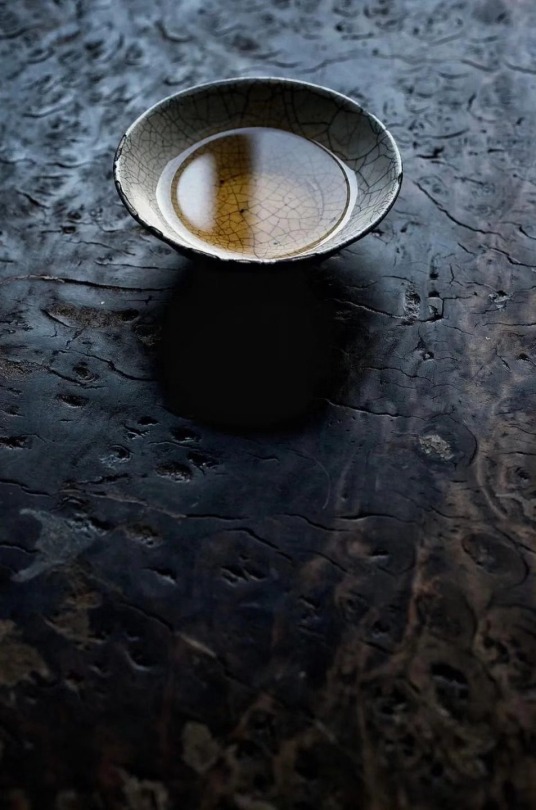
69 notes
·
View notes
Text
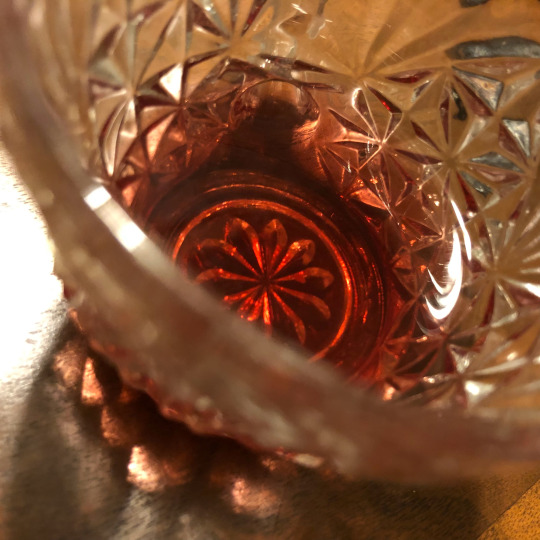
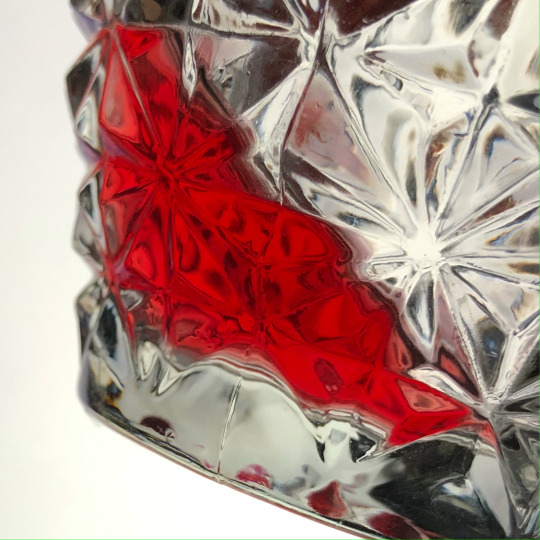
So I tasted the forbidden rice wine.
The reason it looks insanely bright red in the second photo is because I have it backlit by my laptop screen. In the big half gallon bottle it looks indistinguishable from red grape wine, but when you put it in a smaller container you can see that it's much, much more translucent.
I want to say there's a fruityness to it that rice wine made with white rice doesn't have. I don't like it yet, but I think I will like it if it ages longer. I started this batch on Halloween, so it's just about 3.3 months old. Another 3 months, and I think I'll start to like it.
I haven't tried it chilled.
I think I'll wait until later to do that.
3 notes
·
View notes
Text
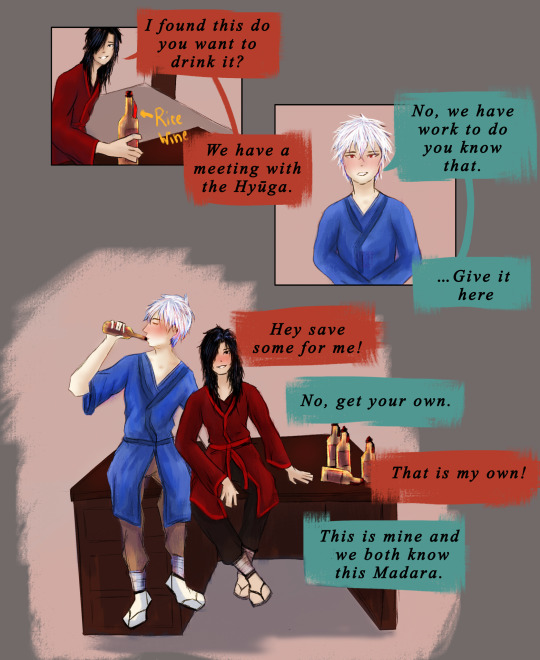
Day 6 rice wine. Read before that rice wine can get you drunk. Was making some wontons and was about to add a lot because I didn’t feel like measuring.
#madatobiweek2022#art#digital art#drawing#madara uchiha#naruto#tobirama#madara#tobirama senju#artists on tumblr#madatobi#tobimada#rice wine#whatever else
23 notes
·
View notes
Text

Sake rice wine
3 notes
·
View notes
Text





#sake#Japanese#Rice Wine#Anime#Manga#Attack on Titan#eren jaeger#mikasa aot#pnw#wa#green coast livin#corxandforx#aot
5 notes
·
View notes
Text
Truth and Trust (In Your Eyes)
Summary:
The past is always with us.
(But what it means depends on your perspective.)

Rating: Mature
Fandom: Naruto
Relationship: Senju Tobirama/Uchiha Madara
Word Count: 941 (Complete)
Entry for @madatobiweek2022
Day 6 - October 14: Secret Relationship | Rice Wine
This story is for @dawen who shared snippets of their story Homecoming on my server and inspired a discussion about why Tobirama asks after Izuna at the next battle after Izuna is killed.
Tobirama bursts out of the house as if he's running from something.
Because he is.
He paces the wooden boards of the engawa before forcing himself into seiza, staring out over the garden. Every leaf and flower, every pebble, is limned in the silver light of the moon, and they exude a peace that he strives to take into himself.
He fails.
A bottle of sake is placed near his knee, but he ignores it even as Madara collapses into an untidy sprawl next to him.
"He shouldn't have said that." Madara's voice is quiet, so unlike the roaring he does in battle, but Tobirama could never mistake it for anyone else's. "He had no right."
"He had every right." Tobirama speaks calmly, constraining himself to reveal no emotion, knowing that it makes him sound as remote and cool as the mountains of Tetsu no Kuni but unable to help himself. "He spoke only truth."
Read the rest on AO3.
#madatobiweek2022#Day 6 Prompt 2#Rice Wine#Phlebas Writes#Naruto#fanfiction#Story: Truth and Trust (In Your Eyes)#Series: MadaTobi Week 2022#Senju Tobirama/Uchiha Madara#Senju Tobirama#Uchiha Madara#Uchiha Izuna#okay to reblog
13 notes
·
View notes
Photo
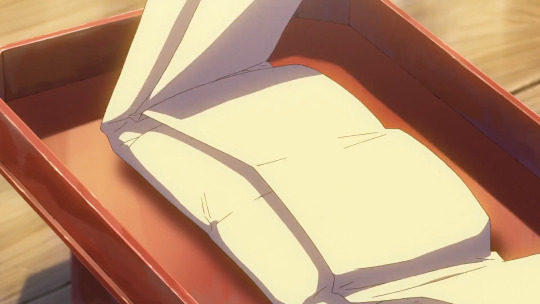
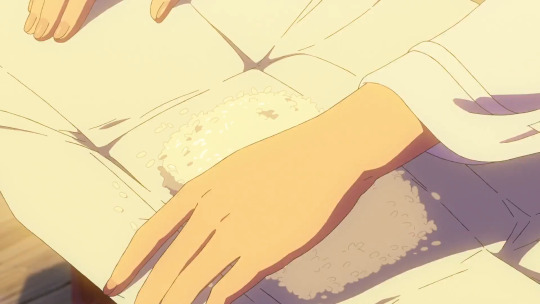
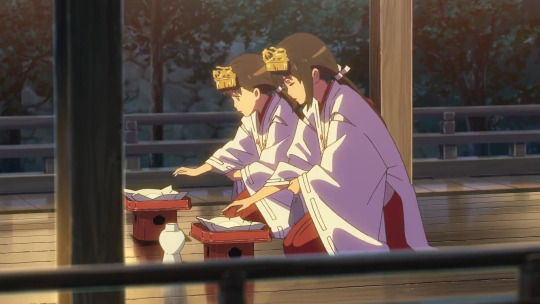
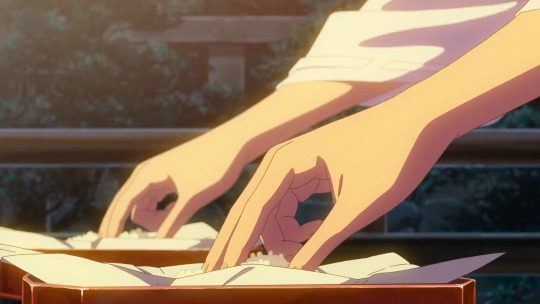
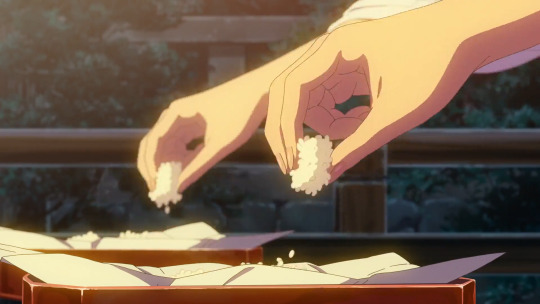


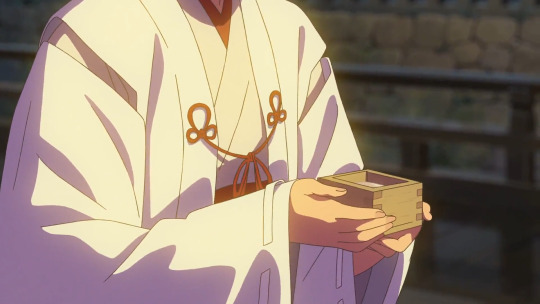
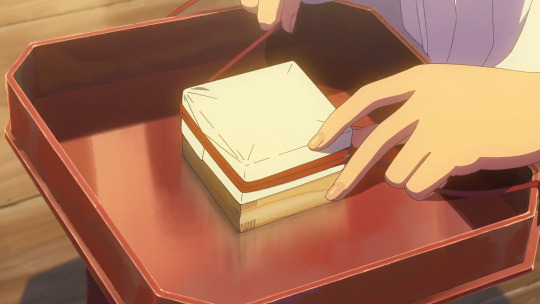
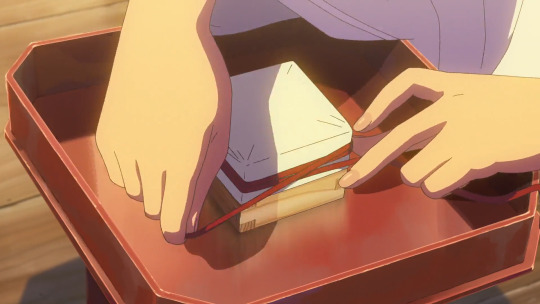
Mitsuha + Yotsuha making kuchikamisake / Kimi no Na wa (2016)
2 notes
·
View notes
Text
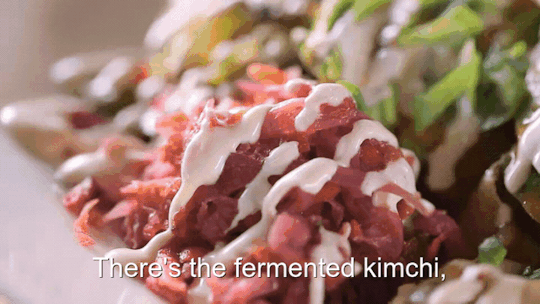
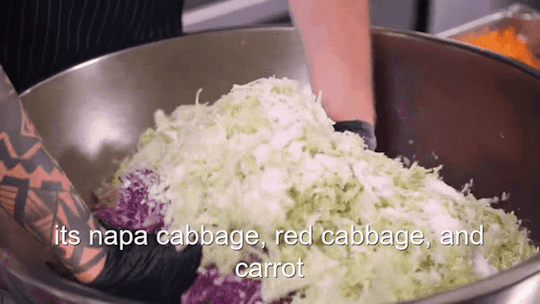





[There's the fermented kimchi, its napa cabbage, red cabbage, and carrot with about to seven to 14 day fermentation. Invitation was made of lace, framing embossed letters of gold, olive oil, aminos, rice wine, vinegar, lemon juice, and sesame oil.]
#s39e01 from italy to africa#guy fieri#guyfieri#diners drive-ins and dives#seven to 14 day fermentation#napa cabbage#red cabbage#olive oil#rice wine#lemon juice#sesame oil#kimchi#carrot#invitation#lace#letters#gold#aminos#vinegar
3 notes
·
View notes
Text

2 notes
·
View notes
Photo

Japanese Culture | Ochoko: The Japanese Saké Cup
Made of glass, ceramic, metal, or wood, ochoko (お猪口 ) saké cups usually come in a set. These sets will often come with tokkuri, a small flask that holds the saké. They can come with three to four cups or, if they're astrologically themed, in a set of 12.
One of the benefits of ochoko is that it is suitable for both warm and cold saké. Compared to other cups, it can handle a variety of temperatures while maintaining the taste and aroma of the beverage. It is also advantageous to quickly grasp the colour and clarity of the saké.
Generally, the smaller the ochoko cup, the more flavours are pronounced. If the cup’s rim is narrow, then the sweetness is enhanced. The acidic notes are more direct if the cup’s rim is thicker. The different materials of ochoko can also influence the taste of the saké. Ochoko made from pottery usually have rounder edges, enhancing the sweet notes of Japan’s beverage of choice and, because the cup is light, is more suitable for rich and dry saké. Ochoko made from tin is said to mellow out flavours and is suited for warm saké.
Ochoko’s name comes from the Japanese phrase, Chotto, which means “just a little.” Over time, this phrase became synonymous with the alcoholic sipping culture in Japan. Historically, ochoko were not used as saké cups. Instead, they were used as small pots to store different kinds of vinegar and sauces in the kitchen or on dinner tables. However, in the Edo period (1603-1867), ochoko began to be used more prominently at saké parties. Originally sakezuki was used as a vessel to hold saké but couldn’t hold much. Around this time, making saké became more developed, and alcoholic volume grew.
As the alcoholic volume of saké grew, people sought other vessels to hold saké. So people decided to use ochoko, as it could hold more saké than sakezuki. The ochoko cup quickly became very popular due to its size. The cup’s size also promoted sipping instead of gulping, which made the parties last longer!
As ochoko became popular, it also influenced social gatherings in Japan. Since ochoko can hold a small but considerable amount of saké, the amount filled can reflect your social status. In saké culture, it is customary to fill others’ cups. Those who always have a full ochoko at a party are typically of high status.
34 notes
·
View notes
Text
Progress Update: 黑米酒
4lb of rice is a lot more rice than I thought it was. I was expecting the volume to double after cooking but I feel like it's significantly more than doubled.
Anyway, I know that once the fermentation really gets going the volume should go down quite a bit, so I have a bunch of temp-jars to put fermenting rice in that I will later add to the main gallon jar once it brews down.
2 notes
·
View notes
Text
Dumpling Recipe - Chinese Minced Pork Dumplings with Black Vinegar Sauce

These Chinese Minced Pork Dumplings are a traditional dish that is suitable for any occasion. They're stuffed with a flavorful mixture of ground pork, garlic, ginger, and other seasonings before being steamed or boiled until tender. The tangy and slightly sweet black vinegar sauce complements the savoury dumplings perfectly.
0 notes
